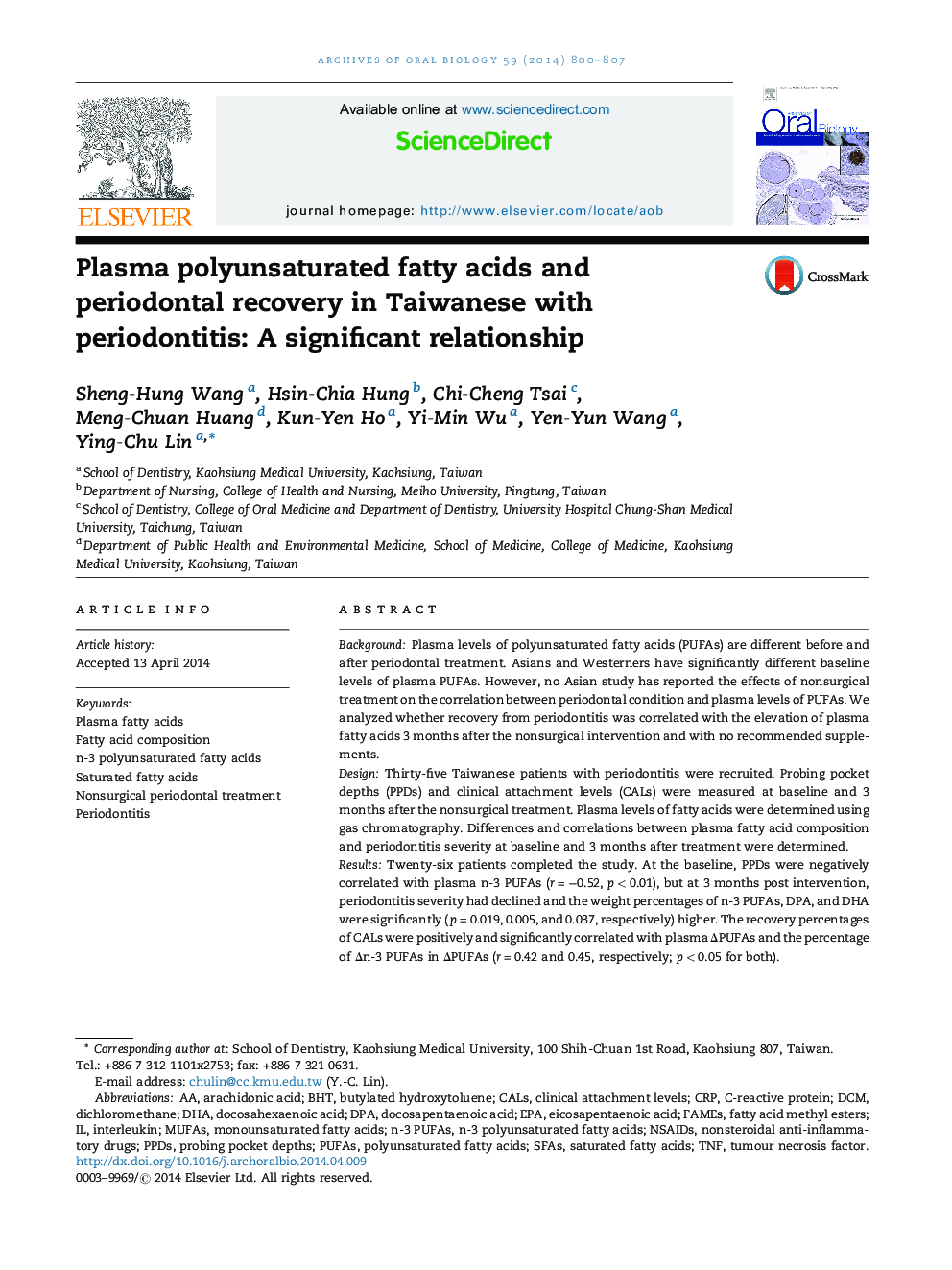| Article ID | Journal | Published Year | Pages | File Type |
|---|---|---|---|---|
| 3120882 | Archives of Oral Biology | 2014 | 8 Pages |
BackgroundPlasma levels of polyunsaturated fatty acids (PUFAs) are different before and after periodontal treatment. Asians and Westerners have significantly different baseline levels of plasma PUFAs. However, no Asian study has reported the effects of nonsurgical treatment on the correlation between periodontal condition and plasma levels of PUFAs. We analyzed whether recovery from periodontitis was correlated with the elevation of plasma fatty acids 3 months after the nonsurgical intervention and with no recommended supplements.DesignThirty-five Taiwanese patients with periodontitis were recruited. Probing pocket depths (PPDs) and clinical attachment levels (CALs) were measured at baseline and 3 months after the nonsurgical treatment. Plasma levels of fatty acids were determined using gas chromatography. Differences and correlations between plasma fatty acid composition and periodontitis severity at baseline and 3 months after treatment were determined.ResultsTwenty-six patients completed the study. At the baseline, PPDs were negatively correlated with plasma n-3 PUFAs (r = −0.52, p < 0.01), but at 3 months post intervention, periodontitis severity had declined and the weight percentages of n-3 PUFAs, DPA, and DHA were significantly (p = 0.019, 0.005, and 0.037, respectively) higher. The recovery percentages of CALs were positively and significantly correlated with plasma ΔPUFAs and the percentage of Δn-3 PUFAs in ΔPUFAs (r = 0.42 and 0.45, respectively; p < 0.05 for both).ConclusionsWe conclude that a higher weight percentage of n-3 PUFAs in total PUFAs was related to the recovery of CALs 3 months after the nonsurgical periodontal treatment. However, no such relationship was found for PPDs.
